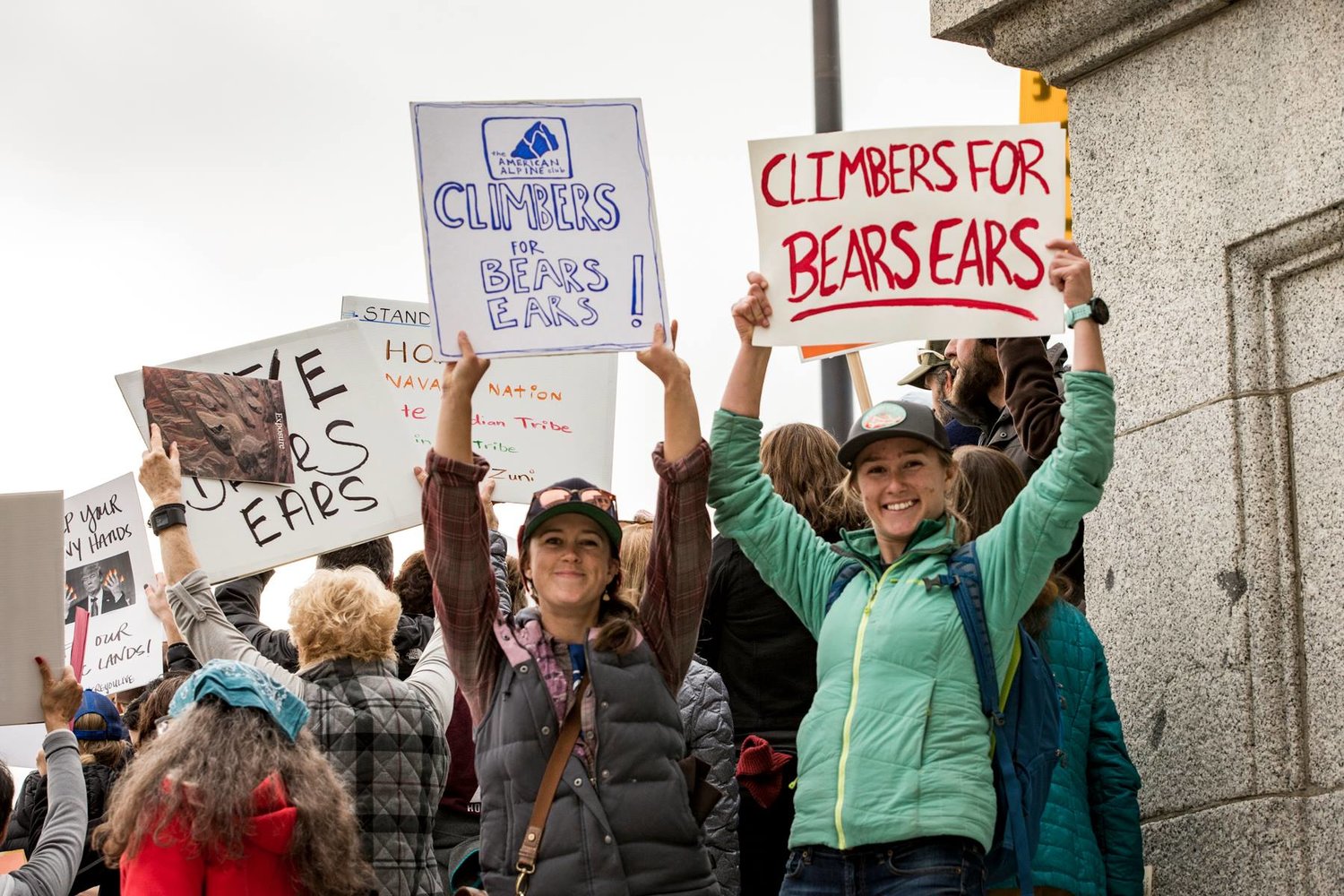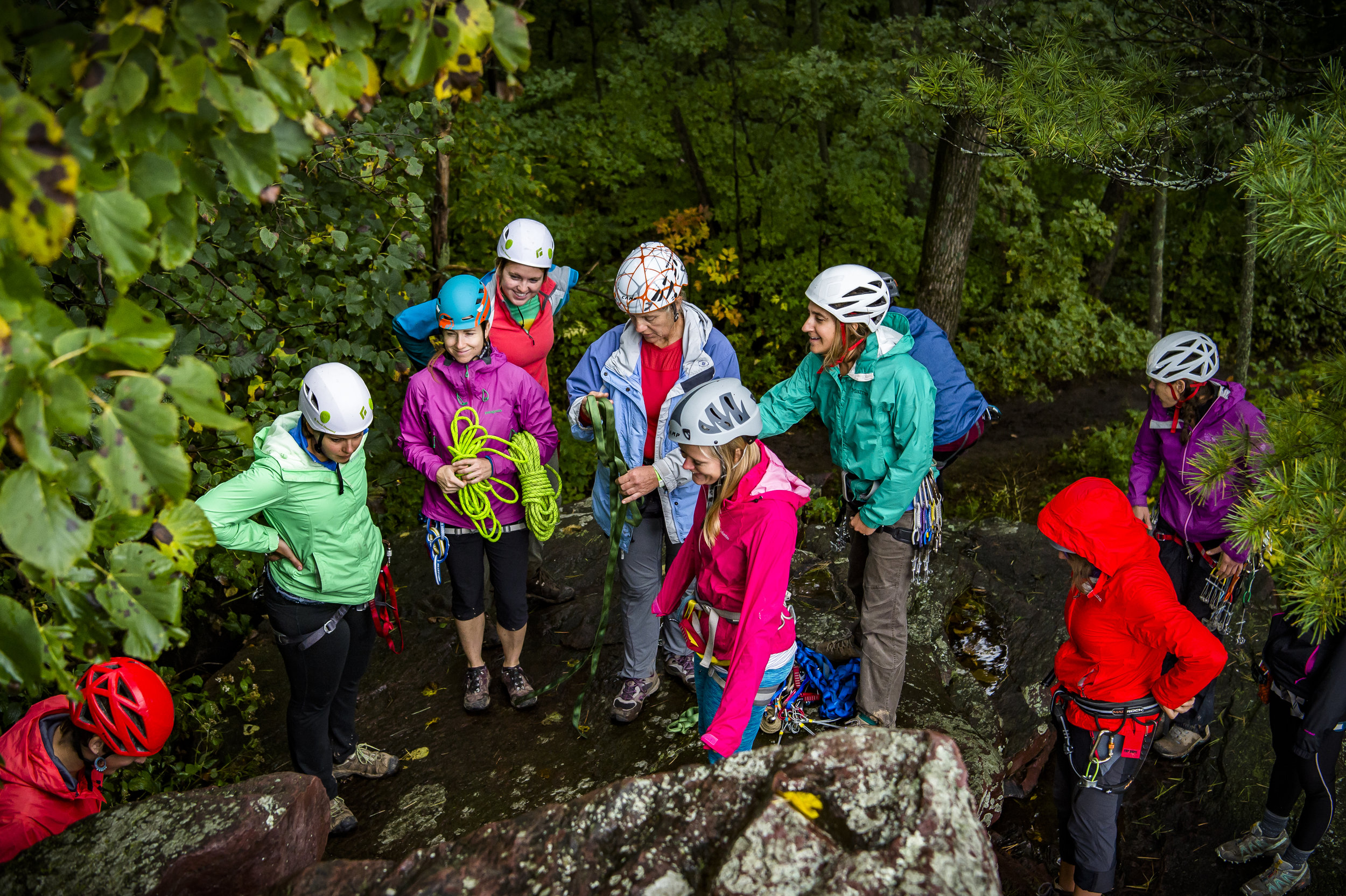Some of the climbing representatives display their power after a successful day on Capitol Hill. From left to right are Sasha DiGiulian, Caroline Gleich, Libby Sauter, Quinn Brett and Katie Boue. Photo: Derek Franz.
We're teaming up with Access Fund to tackle our next challenging ascent: Washington, DC’s Capitol Hill. On May 9-11th, we'll kick off the annual effort by meeting with law and policy makers and to advocate for public lands, outdoor recreation, and improved climbing management— and we'll bring an elite team of professional climbers, outdoor industry leaders, and grassroots partners to help.
Together, we'll advocate for balanced land management policy, with a focus on the Land Water Conservation Fund and Antiquities Act. Both organizations plan to pursue legislative and administrative efforts to increase access to public lands, defend environmental protections and pursue balanced energy policies on public lands.
To learn more, check out the Climb the Hill website. Stay tuned for more info on how you can get involved!
April 13, 2018, Golden, CO—The American Alpine Club (AAC) and Access Fund— two of our country’s foremost climbing advocacy non-profit organizations—are teaming up for a challenging ascent: Washington, DC’s Capitol Hill. The climbing advocacy organizations will return to Capitol Hill May 9 – 11 for their annual Climb the Hill campaign, meeting with law and policy makers and to advocate for public lands, outdoor recreation, and improved climbing management—and they’re bringing an elite team of professional climbers, outdoor industry leaders, and grassroots partners to help.
Access Fund estimates that nearly 60 percent of all rock climbing areas in the US are located on federal public land. Together, The American Alpine Club and Access Fund will advocate for balanced land management policy, with a focus on the Land Water Conservation Fund and Antiquities Act. The organizations plan to pursue legislative and administrative efforts to increase access to public lands, defend environmental protections and pursue balanced energy policies on public lands.
The two organizations are tapping a wide delegation of renowned professional climbers, including Sasha DiGiulian, Alex Honnold, Lynn Hill, Tommy Caldwell, and Margo Hayes among others. They will be joined by prominent outdoor industry executives from Patagonia, Adidas, The North Face, Patagonia, CLIF, and REI. Non-profit partners include Outdoor Alliance (OA), Latino Outdoors, Brothers of Climbing, Brown Girls Climb, American Mountain Guides Association (AMGA) and the Outdoor Industry Association (OIA).
“Climb the Hill is an incredible opportunity to bring the climbing community together and ensure we have a seat at the decision-making table. It’s a privilege to lead this project with our partners at Access Fund who have spent years working on policy issues and meeting with lawmakers. With so many attacks on public lands, this is the time to work together and galvanize climbers,” said AAC’s Policy Director Maria Povec.
“This is an opportunity for Access Fund and American Alpine Club to bring together climbing industry leaders and professional climbers to support our common cause. Climbers have helped shape our public lands system for well over a century, and we are committed to protecting our unique American landscape,” says Access Fund Policy Director Erik Murdock.
Learn more about this joint project at: ClimbTheHill.org






















